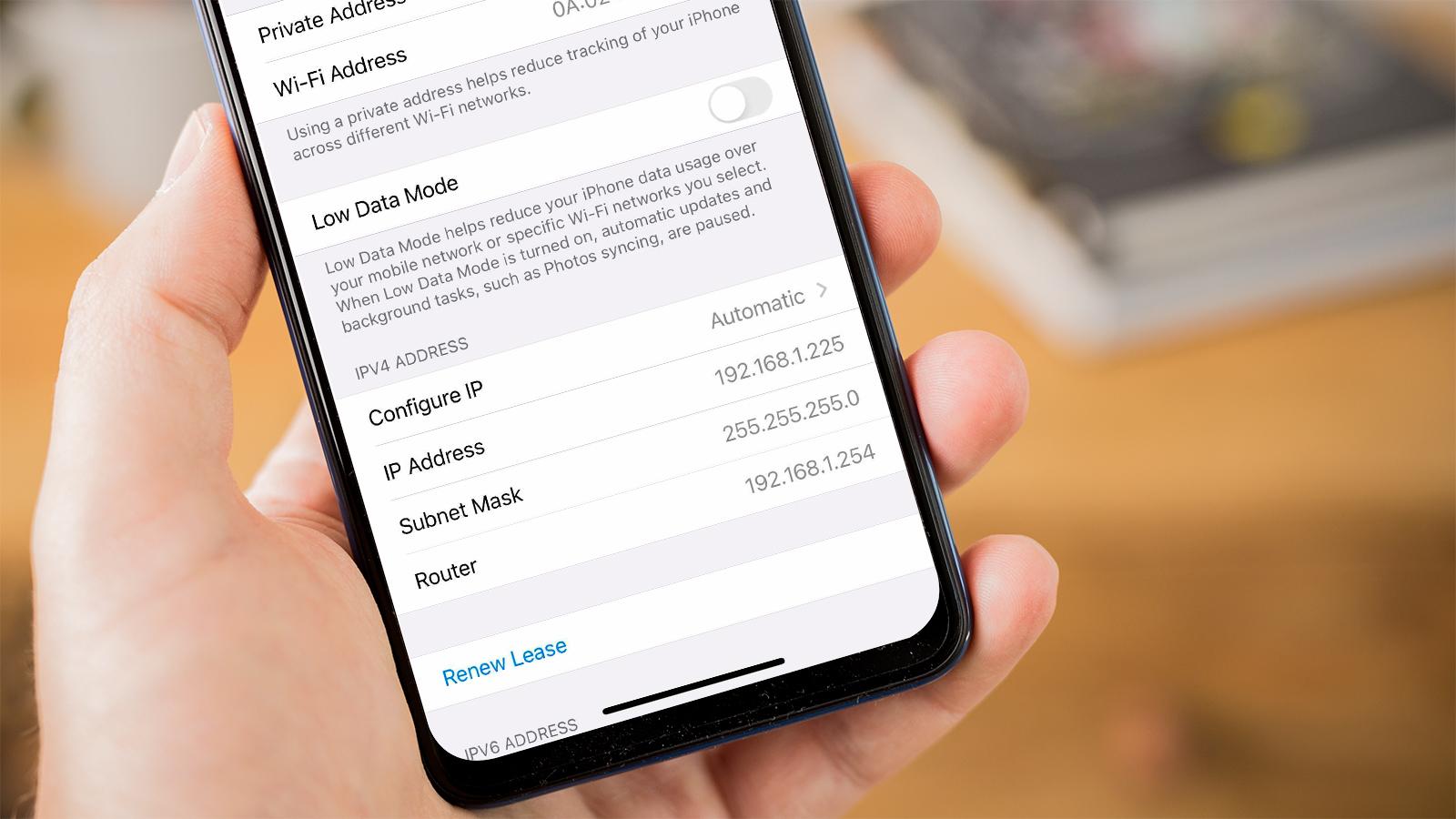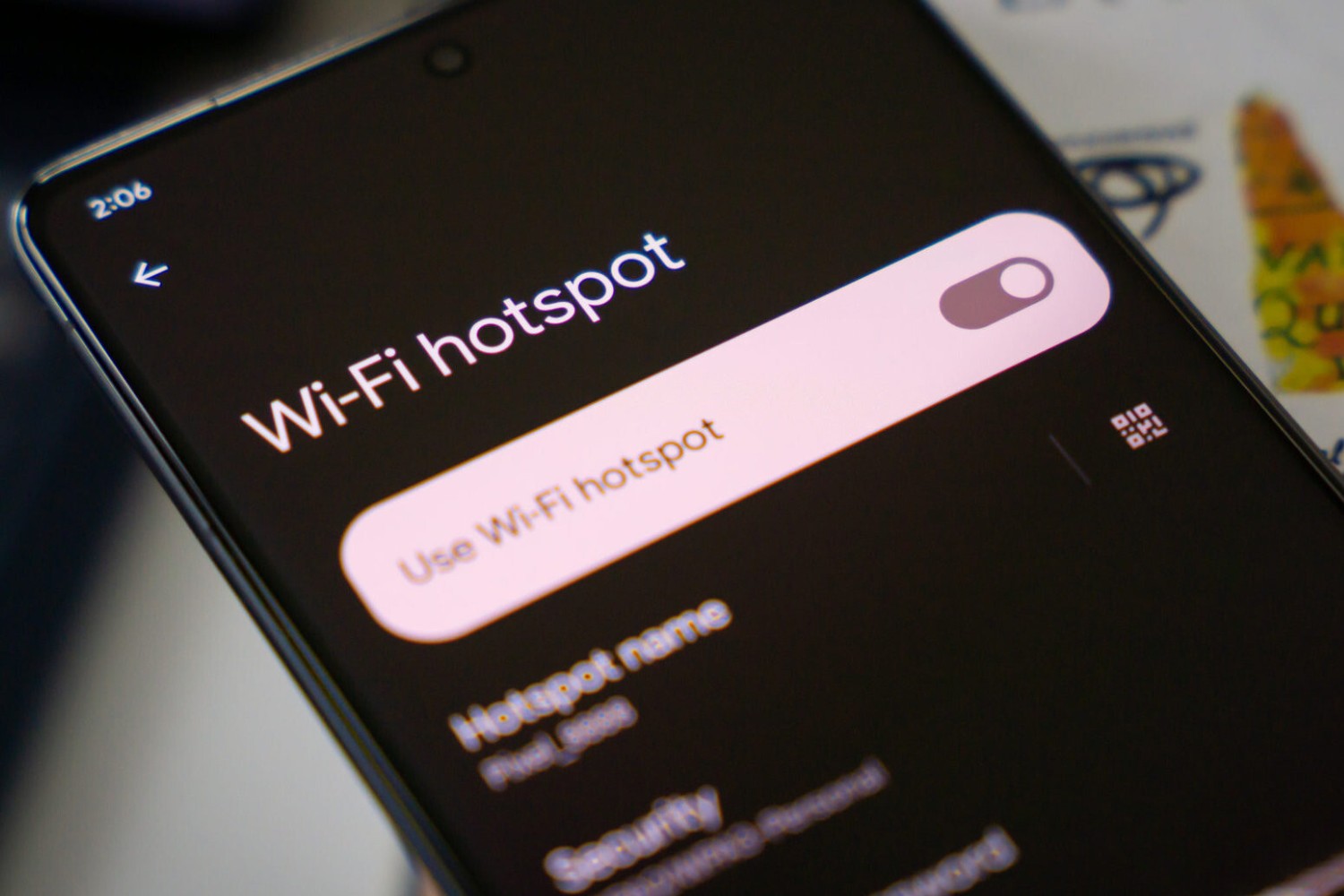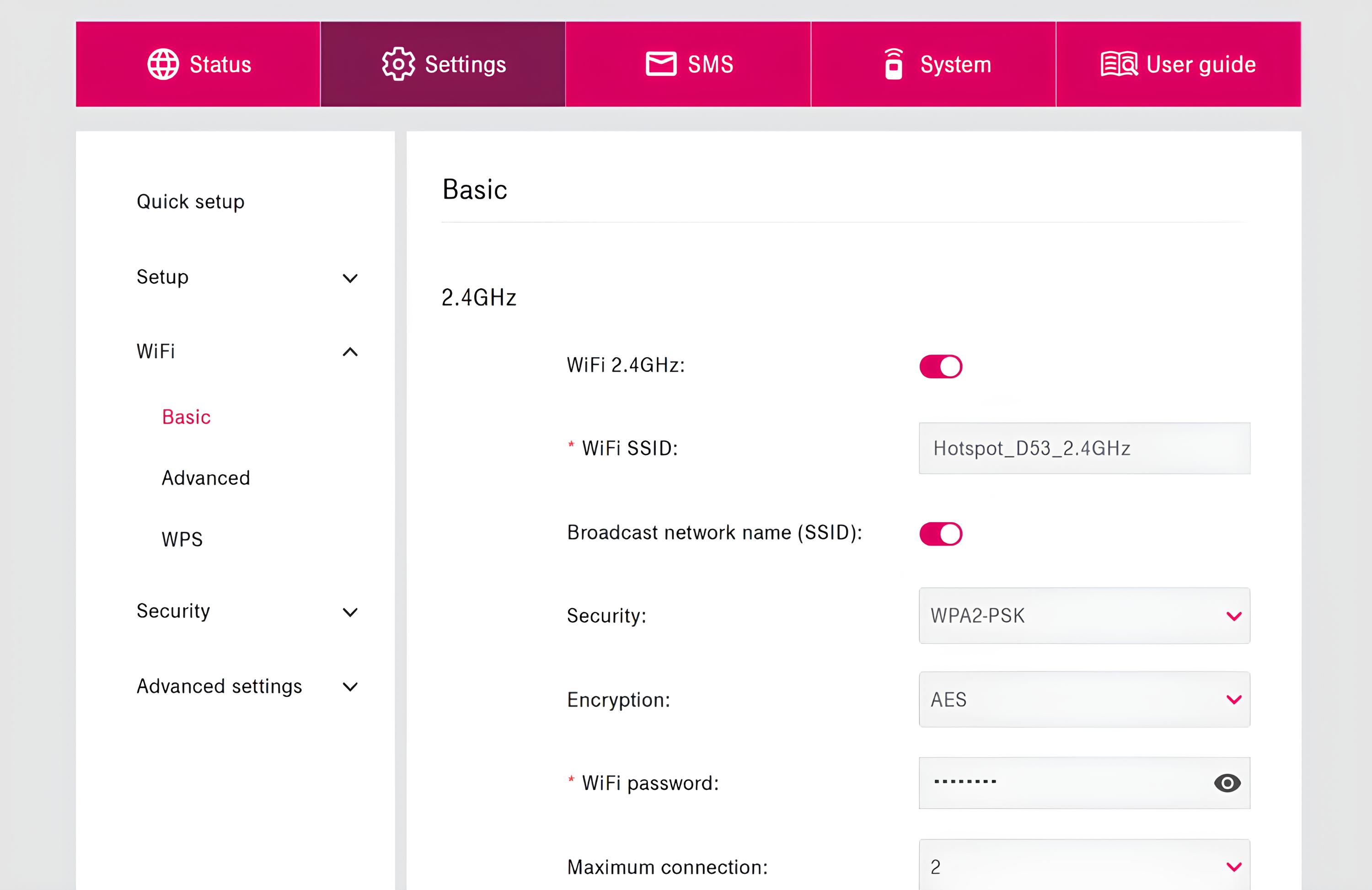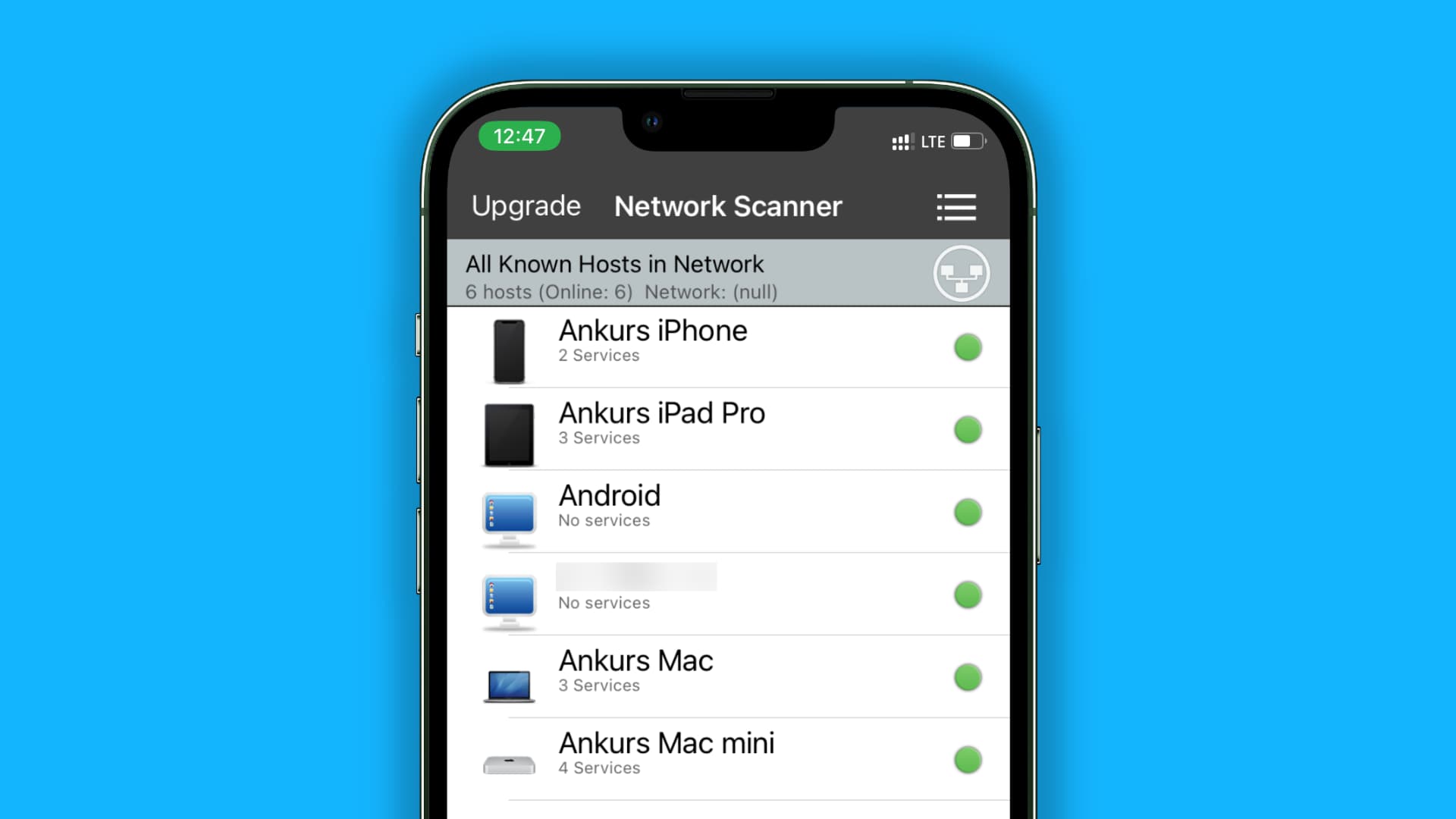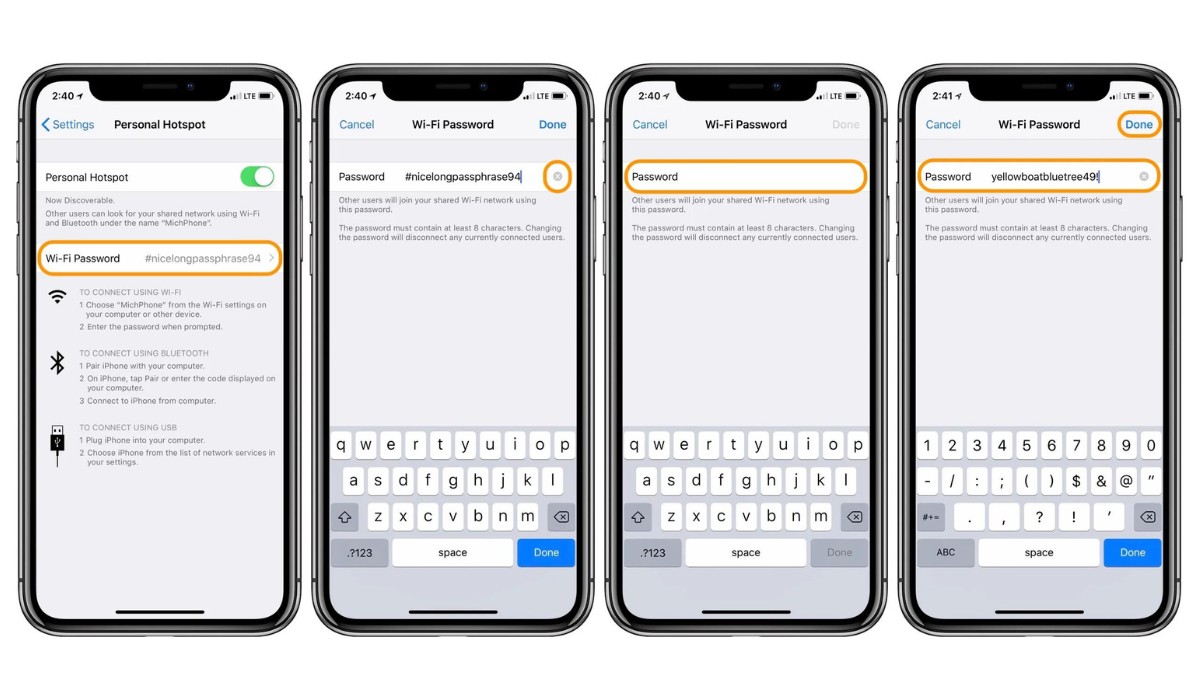Introduction
In today's interconnected world, the internet has become an indispensable part of our daily lives. Whether it's for work, leisure, or staying connected with friends and family, having access to a reliable internet connection is crucial. One common method of accessing the internet on the go is through public Wi-Fi hotspots. These hotspots are often found in cafes, airports, libraries, and various public spaces, providing convenient internet access to users.
However, when using a public Wi-Fi hotspot, it can be beneficial to know the hotspot's IP address. Understanding the hotspot's IP address can offer insights into the network's configuration, troubleshoot connectivity issues, and even enhance security measures. This quick guide will explore the significance of hotspot IP addresses and provide practical methods for locating them.
Let's delve into the world of hotspot IP addresses and discover the valuable information they hold. Whether you're a tech enthusiast, a digital nomad, or someone seeking to optimize their Wi-Fi experience, understanding how to locate a hotspot IP address can empower you to make the most of your internet connectivity.
What is a Hotspot IP Address?
A hotspot IP address is a unique numerical label assigned to a wireless access point that enables devices to connect to a local area network (LAN) or the internet. When you connect to a public Wi-Fi hotspot, such as those found in cafes, airports, or hotels, the hotspot has its own distinct IP address. This address serves as a vital identifier for the network, allowing data to be transmitted between devices and facilitating communication with other networks.
Understanding the concept of a hotspot IP address is essential for comprehending how data is routed across the internet. Every device connected to a network, including Wi-Fi hotspots, possesses an IP address, which acts as a digital postal code for transmitting and receiving data. The hotspot IP address plays a pivotal role in directing data packets to and from the connected devices, ensuring seamless communication within the network.
Moreover, the hotspot IP address serves as a gateway for accessing the internet. By establishing a connection to the hotspot's IP address, devices gain entry to the broader online realm, enabling users to browse the web, send emails, and engage in various online activities. This makes the hotspot IP address a fundamental component in the realm of wireless connectivity, as it forms the bridge between the local network and the vast expanse of the internet.
In essence, a hotspot IP address is the digital identifier that distinguishes a specific wireless access point within a network. It serves as the linchpin for data transmission and network connectivity, allowing users to harness the power of the internet while on the go. By grasping the significance of hotspot IP addresses, individuals can gain a deeper understanding of how wireless networks operate and leverage this knowledge to optimize their internet experience.
Why Locate a Hotspot IP Address?
Locating a hotspot IP address can unlock a plethora of benefits for both casual users and tech-savvy individuals. Understanding the significance of identifying a hotspot's IP address can lead to improved network troubleshooting, enhanced security measures, and a deeper comprehension of network configurations.
First and foremost, locating a hotspot IP address is instrumental in troubleshooting network connectivity issues. When encountering difficulties in connecting to a public Wi-Fi hotspot, having access to the hotspot's IP address can serve as a crucial diagnostic tool. By identifying the hotspot's IP address, users can gain insights into the network's configuration, including the subnet, gateway, and DNS settings. This information is invaluable for pinpointing potential connectivity issues, such as IP conflicts or misconfigured network parameters, enabling users to troubleshoot and resolve connectivity issues effectively.
Moreover, knowing the hotspot IP address can contribute to bolstering security measures. With the rise of cyber threats and data breaches, safeguarding personal information while using public Wi-Fi networks has become increasingly important. By locating the hotspot IP address, users can gain a deeper understanding of the network's security protocols and encryption methods. This knowledge empowers individuals to assess the security posture of the hotspot, identify potential vulnerabilities, and take proactive steps to enhance their data privacy and security while accessing the internet on public Wi-Fi networks.
Furthermore, for individuals with a penchant for networking and technical exploration, locating a hotspot IP address presents an opportunity to delve into the intricacies of network configurations. By accessing the hotspot's IP address, tech enthusiasts can explore the network's settings, including DHCP configurations, port forwarding rules, and firewall settings. This hands-on approach allows individuals to gain practical insights into network administration and expand their technical acumen, fostering a deeper appreciation for the underlying mechanics of wireless networks.
In essence, the act of locating a hotspot IP address transcends mere technical curiosity; it empowers users to troubleshoot connectivity issues, fortify security measures, and gain a deeper understanding of network configurations. Whether it's for resolving connectivity hiccups, bolstering data privacy, or delving into the intricacies of network administration, the ability to locate a hotspot IP address equips individuals with the knowledge and tools to optimize their wireless connectivity experience.
Ways to Locate a Hotspot IP Address
When it comes to locating a hotspot IP address, there are several practical methods that individuals can employ to unveil this crucial piece of network information. Whether you're troubleshooting connectivity issues, enhancing security measures, or simply seeking to gain insights into network configurations, the following approaches offer valuable avenues for discovering the hotspot's IP address.
Using Online Tools
One of the most straightforward methods for locating a hotspot IP address is to leverage online tools designed for network scanning and analysis. Various websites and software applications offer network scanning utilities that can identify active devices and their corresponding IP addresses within a network. By connecting to the public Wi-Fi hotspot and running a network scan using these tools, users can pinpoint the IP address of the hotspot, providing a quick and hassle-free solution for obtaining this vital network identifier.
Using Command Prompt
For individuals comfortable with command-line interfaces, using the Command Prompt or Terminal to locate a hotspot IP address can be an effective approach. By executing commands such as "ipconfig" on Windows or "ifconfig" on Unix-based systems, users can retrieve detailed network information, including the IP address of the connected hotspot. This method offers a hands-on approach for obtaining the hotspot's IP address, making it particularly appealing for those with a penchant for technical exploration and command-line proficiency.
Using Router Settings
In some cases, individuals may have access to the router or wireless access point that powers the hotspot. By accessing the router's settings through a web browser and logging into the administrative interface, users can navigate to the network configuration section to view the assigned IP address of the hotspot. This method provides a direct and authoritative means of obtaining the hotspot's IP address, offering comprehensive insights into the network's configuration and settings.
By embracing these diverse methods for locating a hotspot IP address, individuals can gain the knowledge and tools needed to troubleshoot connectivity issues, fortify security measures, and explore the inner workings of wireless networks. Whether it's through the use of online tools, command-line interfaces, or router settings, the ability to uncover a hotspot's IP address empowers users to take control of their wireless connectivity experience and harness the full potential of public Wi-Fi networks.
Using Online Tools
Utilizing online tools for locating a hotspot IP address offers a convenient and user-friendly approach to unveiling this essential network identifier. With the proliferation of internet-based utilities designed for network scanning and analysis, individuals can leverage these tools to swiftly and accurately pinpoint the IP address of a public Wi-Fi hotspot.
Online tools for network scanning typically operate by probing the local network for active devices and retrieving their associated IP addresses. Upon connecting to a public Wi-Fi hotspot, users can initiate a network scan using these tools, which may be available as web-based services or downloadable software applications. The scanning process systematically examines the network, identifying all connected devices and presenting their respective IP addresses in a comprehensible format.
One of the key advantages of using online tools is the simplicity and accessibility they offer. These tools are often designed with intuitive interfaces and user-friendly functionalities, making them suitable for individuals with varying levels of technical expertise. Whether you're a novice user seeking a straightforward solution or a seasoned network enthusiast, online tools provide a hassle-free method for obtaining the hotspot's IP address without delving into complex technical procedures.
Furthermore, online tools can yield additional insights beyond the hotspot's IP address. Some network scanning utilities may provide supplementary information, such as device names, MAC addresses, and network activity, enhancing the overall visibility into the network's composition and dynamics. This comprehensive view can be invaluable for troubleshooting connectivity issues, identifying unauthorized devices, or gaining a holistic understanding of the network environment.
In essence, harnessing the power of online tools for locating a hotspot IP address streamlines the process and empowers users to swiftly acquire this critical network identifier. By leveraging these user-friendly utilities, individuals can gain valuable insights into the network's composition, troubleshoot connectivity issues, and enhance their overall understanding of wireless networks. Whether it's for casual users seeking a straightforward solution or tech enthusiasts exploring network dynamics, online tools offer a practical and efficient avenue for uncovering the IP address of public Wi-Fi hotspots.
Using Command Prompt
Using the Command Prompt to locate a hotspot IP address provides a direct and efficient method for obtaining this vital network identifier. Command Prompt, available on Windows operating systems, and Terminal, commonly found on Unix-based systems, offer powerful command-line interfaces that enable users to retrieve detailed network information, including the IP address of the connected hotspot.
To begin the process, users can open the Command Prompt or Terminal and execute specific commands to access network details. On Windows, the "ipconfig" command is utilized to display the IP address, subnet mask, and default gateway of the connected network. Similarly, on Unix-based systems, the "ifconfig" command provides comprehensive network information, including the IP address assigned to the device.
Upon executing the appropriate command, the Command Prompt or Terminal promptly returns the network details, prominently featuring the IP address of the connected hotspot. This straightforward approach allows users to swiftly obtain the hotspot's IP address without the need for intricate graphical interfaces or third-party applications.
The utilization of Command Prompt or Terminal for locating a hotspot IP address is particularly appealing for individuals with a penchant for technical exploration and command-line proficiency. By delving into the command-line environment, users can gain practical insights into network configurations and strengthen their command-line proficiency, fostering a deeper understanding of network dynamics.
Furthermore, the command-line approach offers a level of precision and immediacy, enabling users to swiftly retrieve the hotspot's IP address with minimal overhead. This direct access to network information empowers individuals to troubleshoot connectivity issues, validate network settings, and gain a deeper understanding of the network infrastructure without relying on external tools or interfaces.
In essence, leveraging the Command Prompt or Terminal to locate a hotspot IP address presents a robust and hands-on approach for obtaining this critical network identifier. By embracing the command-line environment, users can gain valuable insights into network configurations, bolster their technical acumen, and streamline the process of uncovering the IP address of public Wi-Fi hotspots.
Using Router Settings
Accessing the router settings to locate a hotspot IP address offers a direct and authoritative method for obtaining this crucial network identifier. In scenarios where individuals have administrative access to the router or wireless access point powering the hotspot, navigating the router's settings through a web browser provides comprehensive insights into the network configuration, including the assigned IP address of the hotspot.
To initiate the process, users can open a web browser and enter the router's IP address in the address bar. Upon entering the router's IP address, a login prompt typically appears, prompting users to enter the router's administrative credentials. Upon successful authentication, users gain access to the router's administrative interface, which serves as a gateway to the network configuration settings.
Within the router's administrative interface, users can navigate to the network settings section, which often includes detailed information about the connected devices and their corresponding IP addresses. By exploring the network configuration settings, users can locate the IP address assigned to the public Wi-Fi hotspot, providing a comprehensive view of the network's composition and settings.
The utilization of router settings for locating a hotspot IP address offers several distinct advantages. Firstly, this method provides authoritative and accurate information directly from the source, eliminating potential discrepancies that may arise from external network scanning tools or command-line interfaces. By accessing the router's settings, users obtain a definitive view of the network configuration, empowering them with precise insights into the hotspot's IP address and associated parameters.
Furthermore, the router settings approach offers a holistic perspective on the network's configuration, allowing users to explore additional settings such as DHCP configurations, port forwarding rules, and security protocols. This comprehensive view enables individuals to gain a deeper understanding of the network infrastructure, fostering a nuanced appreciation for the inner workings of wireless networks.
In essence, leveraging router settings to locate a hotspot IP address provides users with a direct and authoritative means of obtaining this critical network identifier. By accessing the router's administrative interface, individuals can gain comprehensive insights into the network configuration, troubleshoot connectivity issues, and deepen their understanding of wireless networks, ultimately empowering them to optimize their wireless connectivity experience.
Conclusion
In the ever-evolving landscape of wireless connectivity, the ability to locate a hotspot IP address emerges as a valuable asset for individuals seeking to optimize their internet experience. Throughout this quick guide, we've explored the significance of hotspot IP addresses and delved into practical methods for uncovering this crucial network identifier. From troubleshooting connectivity issues to fortifying security measures and gaining insights into network configurations, the act of locating a hotspot IP address transcends mere technical curiosity; it empowers users to take control of their wireless connectivity experience.
By embracing diverse approaches such as utilizing online tools, leveraging the command-line environment, and accessing router settings, individuals can acquire the knowledge and tools needed to navigate the intricacies of public Wi-Fi networks. These methods offer a spectrum of options, catering to users with varying levels of technical proficiency and preferences. Whether it's the user-friendly convenience of online tools, the hands-on precision of command-line interfaces, or the comprehensive insights provided by router settings, each approach equips individuals with the means to uncover the IP address of public Wi-Fi hotspots.
Moreover, the quest to locate a hotspot IP address represents more than a technical endeavor; it embodies a journey of empowerment and understanding. By unraveling the digital identifier that underpins wireless connectivity, individuals gain a deeper appreciation for the inner workings of networks, fortify their security posture, and cultivate a sense of agency in navigating the digital realm.
As we navigate the interconnected world of public Wi-Fi networks, the knowledge and tools gained from locating hotspot IP addresses serve as pillars of empowerment, enabling individuals to troubleshoot connectivity hiccups, fortify their data privacy, and explore the nuances of network administration. Whether it's for seamless browsing at a favorite café, staying connected during travels, or simply gaining a deeper understanding of wireless networks, the ability to locate a hotspot IP address empowers individuals to harness the full potential of public Wi-Fi networks and embark on a journey of digital exploration and empowerment.







